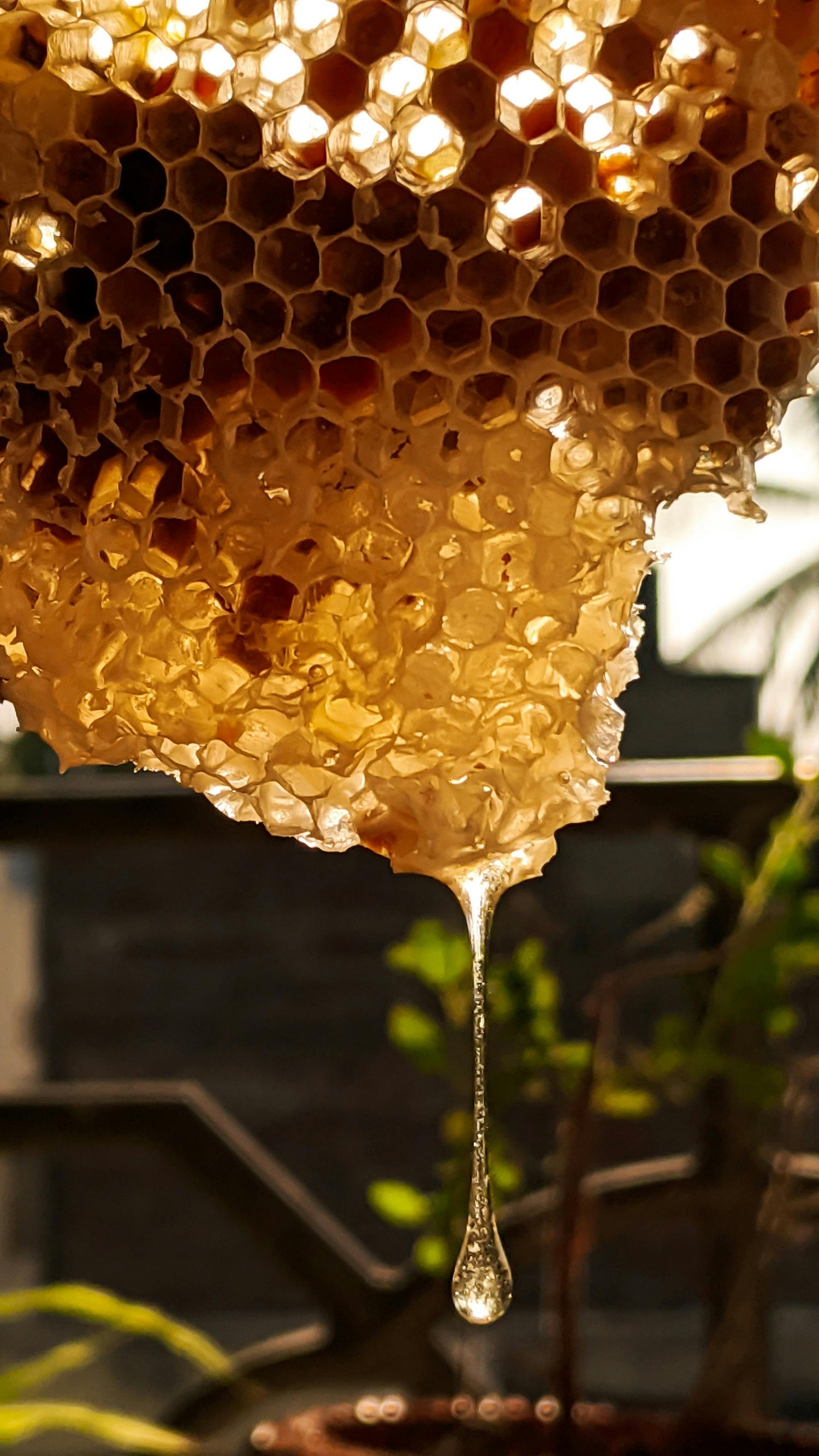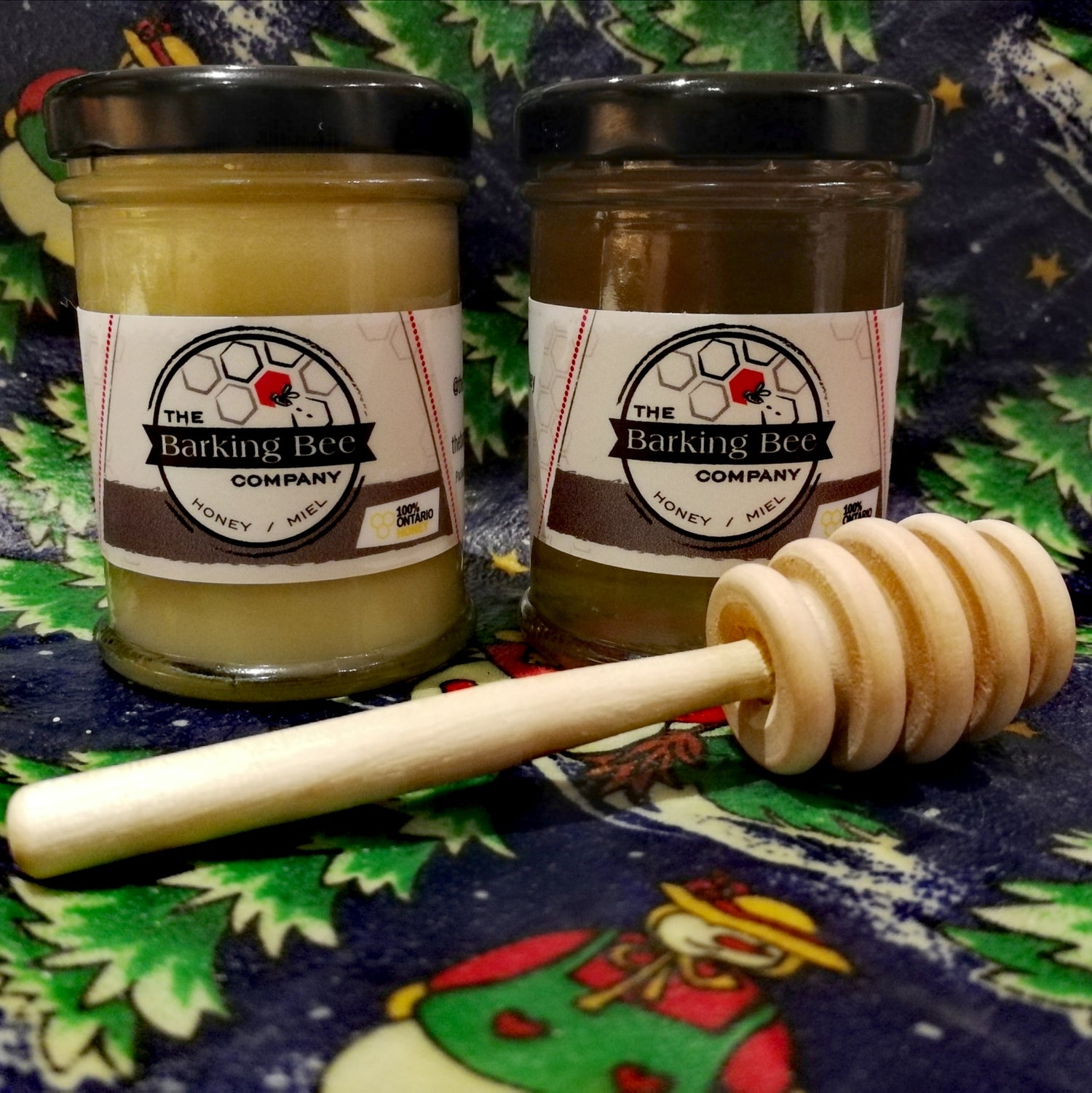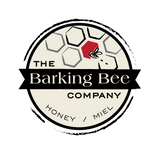
Our Story
The Barking Bee Company owns and operates apiaries located throughout Eastern Ontario and is a honey producer located in Kemptville, ON. A short drive south of Ottawa.
Our mission is to increase the local honey supply in a sustainable and environmentally conscious way while supporting local farms and foodsuppliers.
We are supporting local businesses through sales, Farmers’ Markets through their missions and visions, and offer a local source of honey for food producers to add honey into their products.
Nothing added, nothing taken away. You can expect a delicate and fresh wildflower flavour with all of the health benefits that come from natural honey. 100% honey from our region. Family-owned and operated out of Kemptville Ontario located between Ottawa and the St Lawrence.
Our Honey Has Crystallized!
Did you know that real honey crystallizes?
Honey is a super-saturated solution of two sugars: glucose and fructose. Since it's super-saturated, it's a natural chemical process that some of the sugars eventually come out of solution. Flower nectars vary in the amount of glucose and fructose they contain, and as a result, honey made from different nectars will crystallize at different speeds. In general, honey varieties with higher glucose content (such as fall wildflower or goldenrod honey) will crystallize more quickly than honey with higher fructose content (like basswood honey). Honey will even crystallize when it's in the honeycomb.
Some honey is filtered through a fine filter under pressure. Doing so removes even the tiniest of microbes, micro-nutrients, and pollen, which delays their crystallization. This does create a more shelf-stable honey that is slower to crystallize and it is clearer and brighter in color. If your honey never crystallizes it's a good indication that it has been filtered. Many of the health benefits of raw, unfiltered honey reside in the tiniest particles removed in the filtration process.
Raw and unfiltered honey, like ours, tends to take on a white, solid appearance over time – sometimes a short time! The crystals begin forming around the particles (microbes, micro-nutrients, and pollen) called “seeds” and then continue to multiply until a lattice builds throughout the container. There are plenty of these seeds in a jar of honey!
When your honey does crystallize, don’t panic - your honey has not gone bad! You can eat honey in its crystallized state. If you prefer liquid honey, please do the following:
To return the honey to its liquid state, place the jar in warm (around 40 C) water for 30-40 minutes. Remove the jar from the water and enjoy!

Our Mission
Our mission is to increase the local honey supply in a sustainable and environmentally conscious way while supporting local farms and foodsuppliers.
